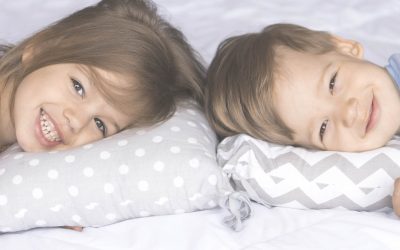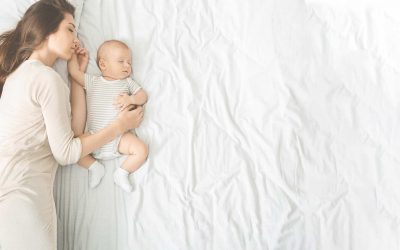Can A Sound Machine Be Part Of A Healthy Sleep Routine?
Confused about whether or not you should or shouldn’t be using a sound machine in your infant’s room to foster healthy sleep? You aren’t alone. A study published in the American Academy of Pediatrics has some families re-evaluating the use of sound machines. Here’s what you should know.
What is a sound machine?
A sound machine is a device that produces continuous noise. The sounds produced range from basic white noise to nature inspired sounds like rainfall and waves crashing.
Will my baby rely on a sound machine to fall asleep?
It’s possible that your baby may development a dependency on these sounds to initiate sleep, but there is typically less of a dependency in comparison to other props like a pacifier, or being bounced or rocked to sleep. Sound machines are also effective at blocking out environmental noises like street traffic, household pets, siblings and birds. A household fan is an equally effective option for blocking out noise in a bedroom and serves the dual purpose of air circulation.
Can a sound machine damage my babies hearing?
The American Academy of Pediatrics released a study that tested the maximum sound levels (using a measurement of A-weighted dB) that could be reached in commercially available sound machines to determine if the devices were capable of theoretically damaging infant hearing based on current noise exposure guidelines. The study concluded:
- Of the 14 commercially available sound machines tested, three were found to produce more than 85 A-weight dB when placed 30 cm away from the typical 6-month-old’s ear canal. If played at these sound levels for more than 8 hours, these sound machines exceed current noise exposure limits set for adults.
- The maximum sound levels for all of the commercially available sound machines tested was more than 50 A-weighted dB when placed 100 cm away from the typical 6-month-old’s ear canal. 50 A-weight dB is the suggested noise limit for hospital nurseries.
- Exposure to sound machines with high noise output may put infants at risk of developing noise-induced hearing loss or abnormal development of the auditory system.
What can I do to protect my child’s hearing?
The study’s authors recommend the following for the safe operation of your sound machine to ensure healthy sleep:
- Place sound machines as far away from your infant as possible;
- Set the volume as low as possible; and
- Limit the duration of use
The Bottom Line
Keep in mind that 50 A-weighted dB is the standard set for hospital nurseries where infants are constantly exposed to noise from medical equipment. 50 A-weighted dB is about the equivalent of a quiet suburb or a conversation at home. Sitting in my bed with a tower fan about 6 feet away on the highest setting measures in at about 52 dB.
While the study effectively highlighted that many commercially available sound machines are capable of producing noise outputs that exceed current guidelines, it did not observe the direct effects on infants. If you are using a sound machine in your home, take some time to evaluate whether the noise level and duration of use is appropriate for your child’s and your family’s needs.
Sleep Tip:
Check out these free apps to test noise levels in your home:
- Decibels | David Bannach
- Decibel 10th | SkyPaw Co. Ltd.
- Decibel |Gadget Frontier
Trouble in the Mornings? Read this Article on Healthy Sleep Tips to get Your Child Ready for School.










